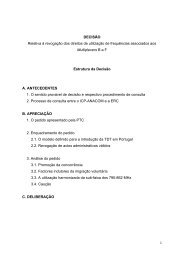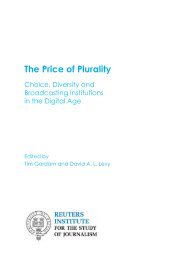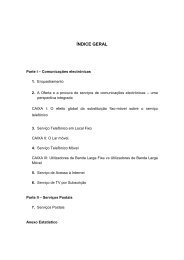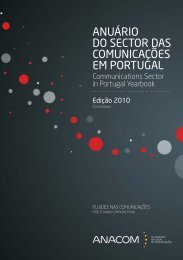The Digital Fact Book - Quantel
The Digital Fact Book - Quantel
The Digital Fact Book - Quantel
- No tags were found...
Create successful ePaper yourself
Turn your PDF publications into a flip-book with our unique Google optimized e-Paper software.
CCommon Image Format (CIF)<strong>The</strong> ITU has defined common image formats. A standard definition image of 352 x 240 pixelsis described for computers. For HDTV production the HD-CIF preferred format is definedin ITU-R BT.709-4 as 1920 x 1080, 16:9 aspect ratio with progressive frame rates of 24, 25and 30 Hz (including segmented) and interlace field rates of 50 and 60 Hz. This has helpedto secure the 1920 x 1080 format as the basis for international program exchange.See also: ITU-R BT.709Component video<strong>The</strong> normal interpretation of a component video signal is one in which the luminanceand chrominance remain as separate components, e.g. analog components in BetacamVTRs, digital components Y, Cr, Cb in ITU-R BT.601 and 709. RGB is also a component signal.Pure component video signals retain maximum luminance and chrominance bandwidthand the frames are independent of each other. Component video can be edited at anyframe boundary.See also: Cut (edit)Composite videoLuminance and chrominance are combined along with the timing reference sync and colorburst information using one of the coding standards – NTSC, PAL or SECAM – to makecomposite video. <strong>The</strong> process, which is an analog form of video compression, restrictsthe bandwidths (image detail) of the color components. In the composite result color isliterally added to the monochrome (luminance or Y) information using a visually acceptabletechnique. As our eyes have far more luminance resolving power than for color, the colorsharpness (bandwidth) of the coded signal is reduced to well below that of the luminance.This provides a good solution for transmission and viewing but it becomes difficult, if notimpossible, to accurately reverse the process (decode) back into pure luminance andchrominance. This limits its use in post production as repetitive decode, recode cyclesseverely impair the pictures. Deriving keys from composite video gives poor results.See also: 4f sc, D2, D3CompositingMulti-layering for moving pictures. Modern composites often use many techniques together,such as painting, retouching, rotoscoping, keying/matting, digital effects and color correctionas well as multi-layering to create complex animations and opticals for promotions, titlesequences and commercials as well as in program content. Besides the creative elementthere are other important applications for compositing equipment such as image repair,glass painting and wire removal – especially in motion pictures.44







